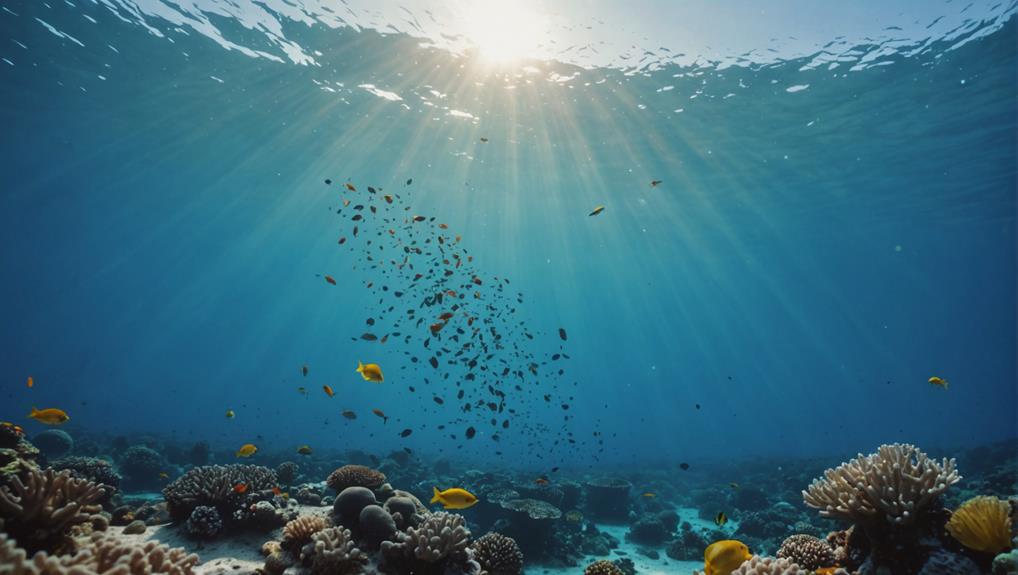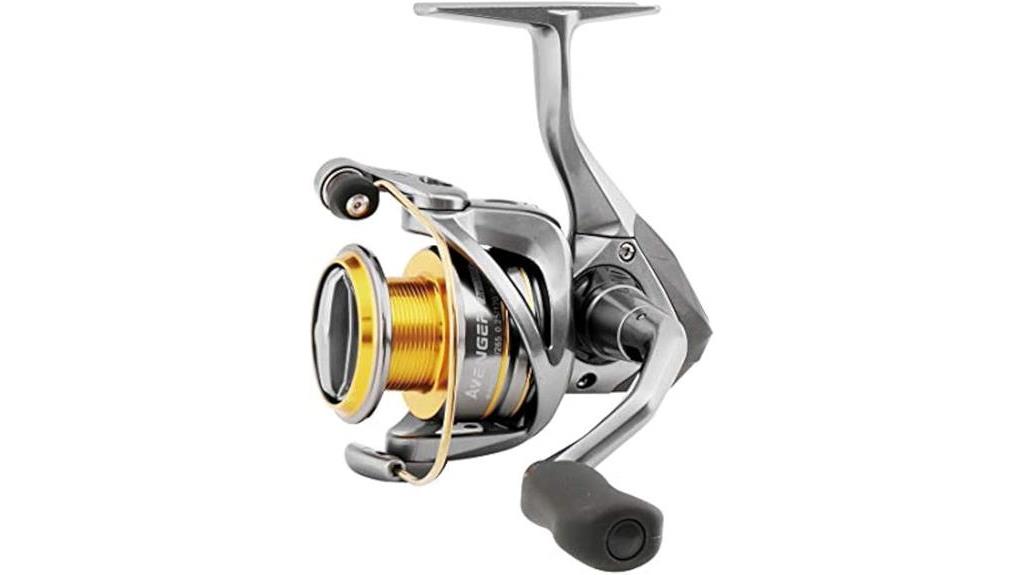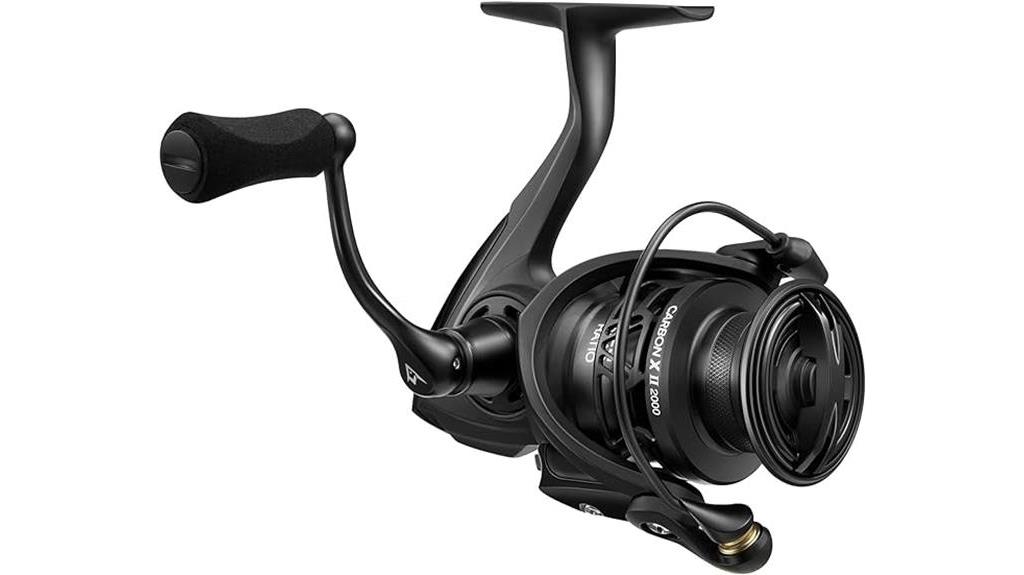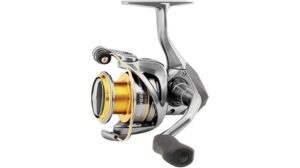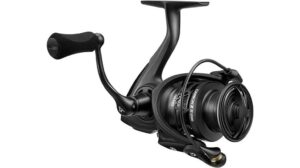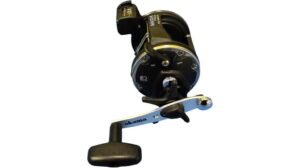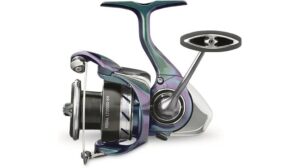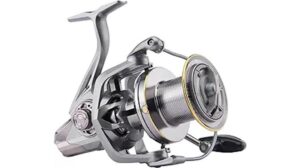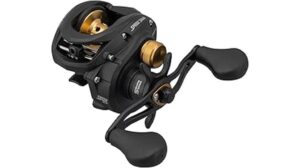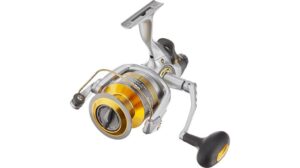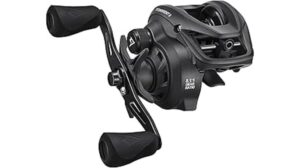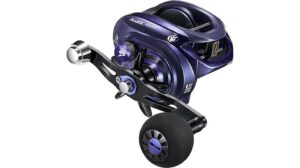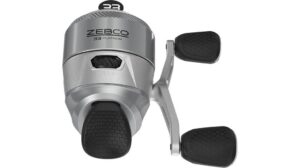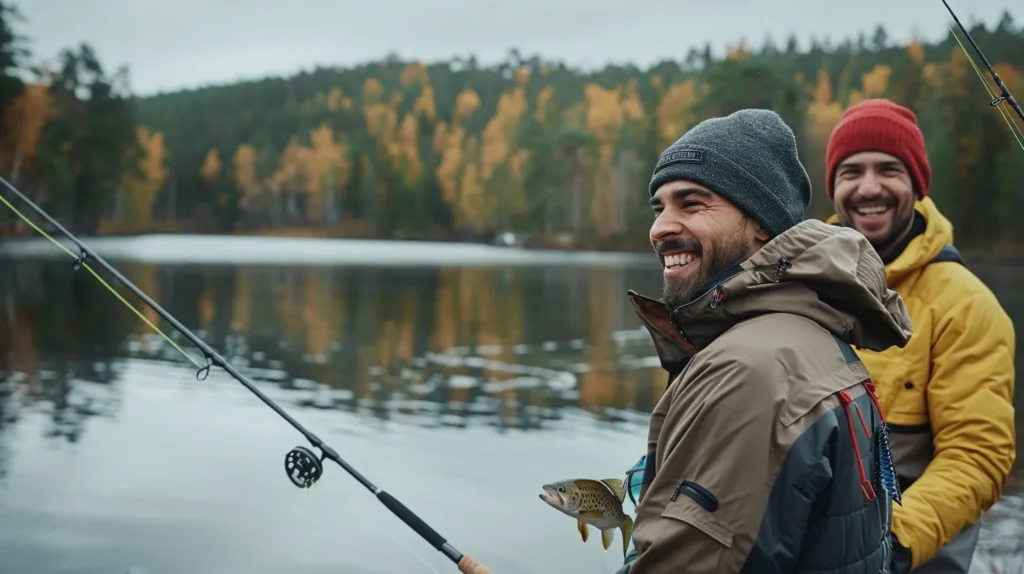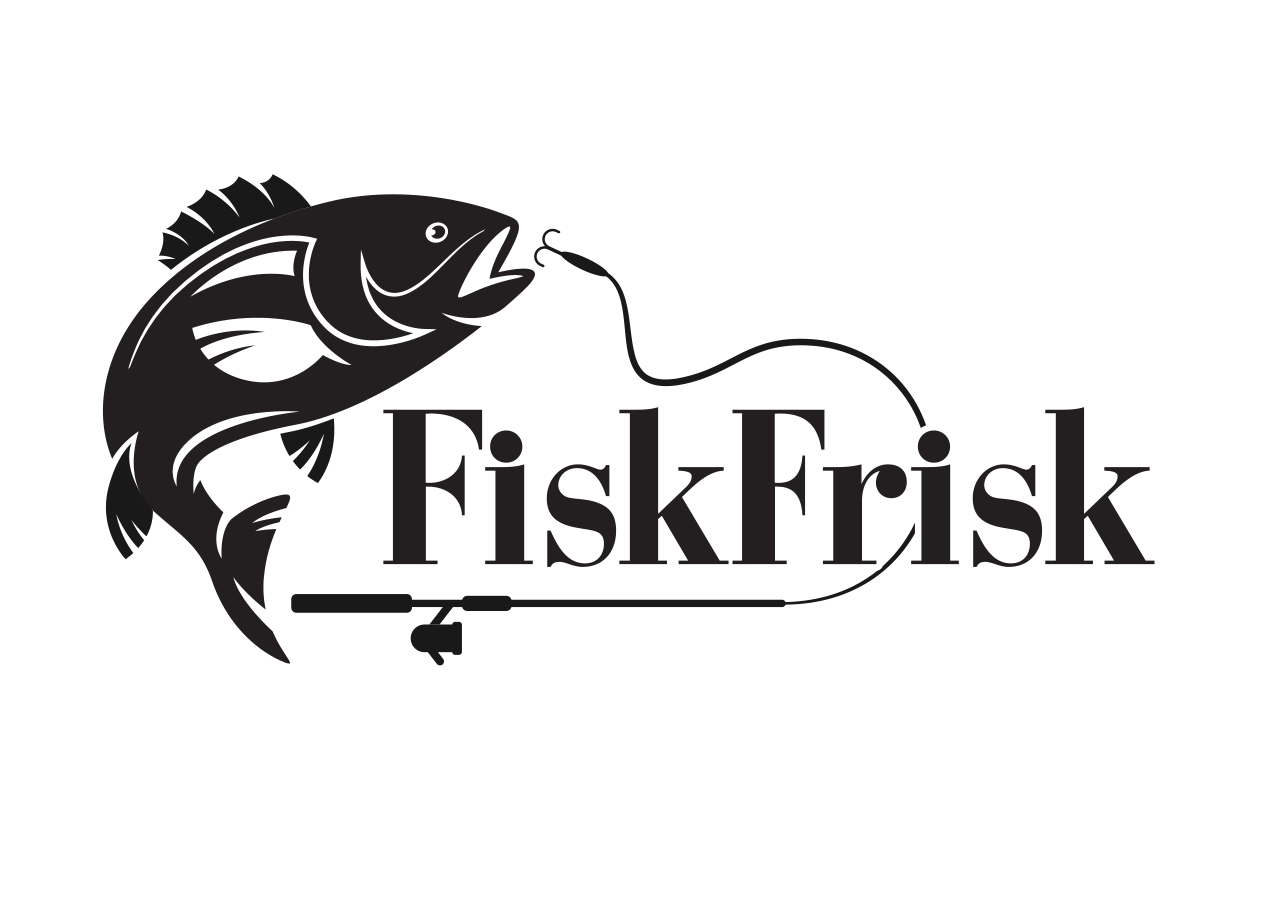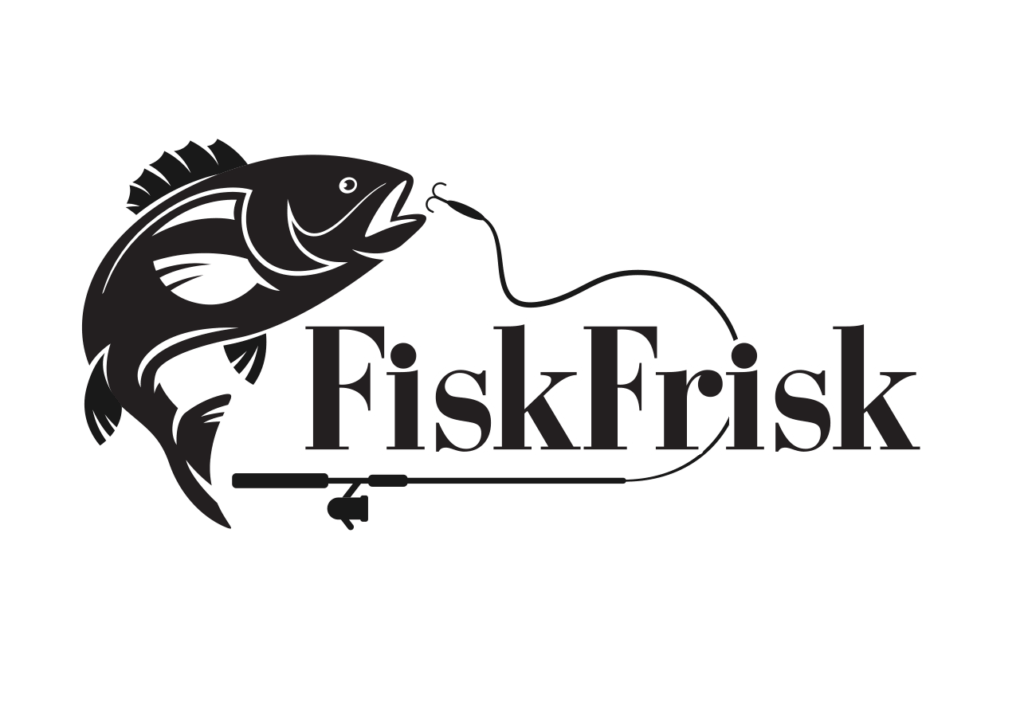Chumming is a fishing technique where you disperse bait into the water to attract fish to a specific area. You can use various types of chum, including fresh, frozen, or dry options, and dispense it using buckets, nets, or specialized dispensers. This method can increase your catch rates and help you target desired species more effectively. However, it's important to consider the environmental impact and local regulations, as chumming can disrupt ecosystems and alter fish behavior. Different strategies work for specific species and marine environments, and there are alternatives to traditional chumming. Understanding the nuances of this technique can significantly enhance your fishing success.
Key Takeaways
- Chumming is a fishing technique that involves dispersing bait in the water to attract fish to a specific area.
- Common chum materials include fish parts, blood, oil, and commercially prepared mixtures.
- Chumming can be done using various methods like buckets, nets, or specialized dispensers to distribute the bait.
- The practice aims to increase catch rates by concentrating fish and stimulating their feeding behavior.
Definition of Chumming
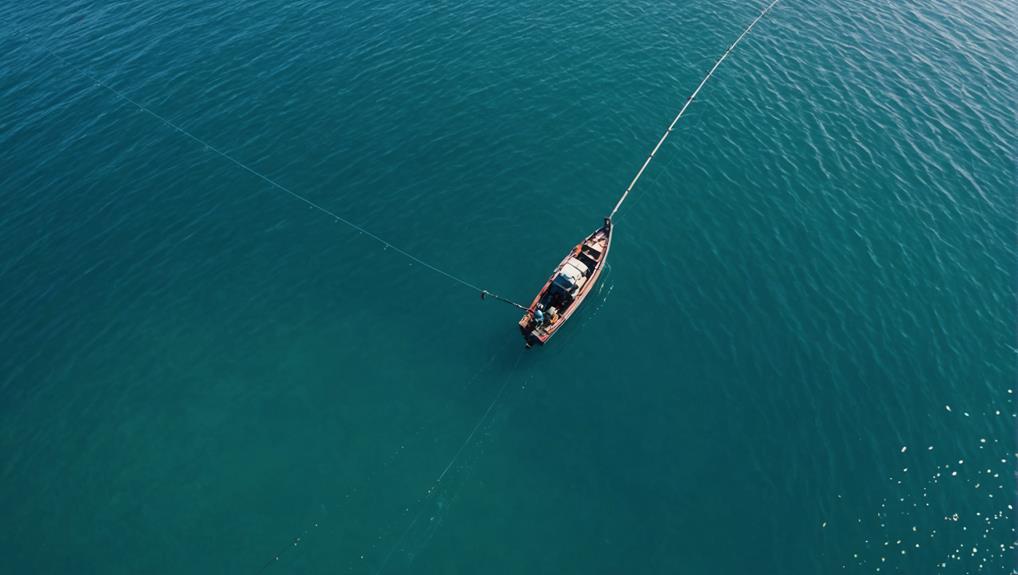
Chumming, a strategic fishing technique, involves the deliberate dispersal of bait or fish remnants into water to attract and concentrate fish in a specific area. As a fisherman, you'll find this method incredibly effective for increasing your catch rates.
When you chum, you're essentially creating an irresistible buffet for fish, drawing them to your fishing spot.
You can use various types of chum, including fresh, frozen, or dry options. The choice depends on the fish species you're targeting and the local regulations. As part of the fishing community, you'll learn that different chum types attract specific fish, allowing you to tailor your approach.
To dispense chum, you've got several options at your disposal. You might use buckets, pots, nets, or specialized dispensers to scatter the bait in the water. The method you choose will depend on factors like the fishing environment and your target species.
Chumming techniques are diverse, including live bait chumming, chunk chumming, broadcast chumming, and sand ball chumming. Each approach has its merits, and mastering these methods will significantly enhance your fishing success.
Types of Chum
Anglers' arsenal of chum types includes fresh, frozen, and dry options, each offering unique advantages for attracting specific fish species.
Fresh chum, often consisting of live bait or recently deceased fish, provides an irresistible scent trail for predatory species. You'll find that using fresh chum can be particularly effective in areas with high fish activity.
Frozen chum offers convenience and longevity, allowing you to prepare and store large quantities for future use. This type is especially useful for extended fishing trips or when fresh options are scarce.
Dry chum, typically in block form, provides a slow-release option that gradually disperses attractants into the water column.
Live bait serves as an active form of chum, creating movement and vibrations that draw fish to your target area. Fish carcasses, including heads and entrails, release potent scents that can attract larger predatory species. When using these methods, you'll become part of a community of anglers who understand the importance of strategic chumming techniques.
Chumming Techniques
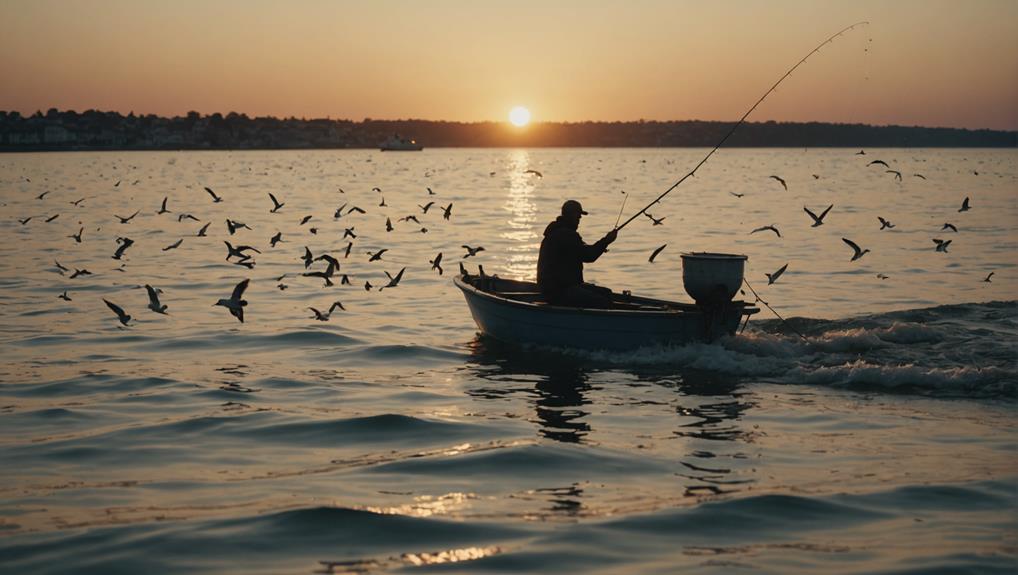
You'll find a variety of chumming techniques to enhance your fishing success. These methods include popular approaches like live bait chumming and broadcast chumming, as well as DIY chum recipes tailored to specific fish species.
To maximize your chumming effectiveness, you'll want to utilize tools such as chum bags, chum dispensers, and specialized chumming rods.
Popular Chumming Methods
Within the realm of chumming, several proven techniques have emerged as highly effective for attracting various fish species. Chunking, a method where large pieces of bait are dropped into the water, is particularly successful for luring in larger fish. This technique creates a consistent scent trail that can attract species from considerable distances.
Live bait chumming involves using small, live fish or invertebrates to entice predatory species. This method mimics natural feeding behavior and can be especially effective in areas with high fish populations.
Broadcast chumming, on the other hand, involves dispersing small particles of chum over a wide area, creating a feeding frenzy that attracts a diverse range of fish.
Bottom stirring is a technique that's particularly useful when targeting bottom-dwelling species. By disturbing the sediment, you'll release natural food sources and create a cloud that can attract curious fish.
When chumming, it's crucial to consider current patterns to ensure your chum reaches the intended area and maximizes its effectiveness. By employing these popular methods, you'll increase your chances of a successful fishing expedition and feel more connected to the angling community.
DIY Chum Recipes
While commercial chum products are readily available, many fishing enthusiasts opt to create their own chum recipes, tailoring the mixture to specific target species and local conditions. DIY chumming recipes allow you to experiment with different scents, flavors, and textures to attract specific fish species. Common ingredients include:
| Base Ingredients | Enhancers | Binders |
|---|---|---|
| Cornmeal | Tuna oil | Bread mix |
| Fish scraps | Fish oil | Molasses |
| Shrimp shells | Cat food | Soybean meal |
| Ground bait | Anise oil | Gelatin |
When crafting homemade chum recipes, focus on using biodegradable materials and monitor their effectiveness. Adjust your chum mix based on fish response to optimize attraction. Remember to avoid over-chumming, which can saturate the area and reduce fishing success.
Effective Chumming Tools
How can anglers effectively deploy chum to attract fish? To maximize chumming success, it's essential to utilize specialized tools and techniques that optimize the dispersion of attractants in the water column. Chum dispensers, mesh bags, and buckets are key tools in your arsenal, each offering unique advantages for distributing fish attractants. Chum bags allow for a controlled release of bait, while dispensers provide a steady stream of chum to maintain a consistent chum slick.
You'll find that different chumming techniques yield varying results. Live bait chumming and chunk chumming are particularly effective for attracting larger fish. When you're fishing near structures like reefs or docks, strategic chumming can significantly enhance your chances of success by drawing fish to these habitats. Adapting your approach to the specific water body—whether it's a lake, river, or shoreline—is crucial for optimal results.
For the DIY enthusiast in you, homemade dispensers can be just as effective as store-bought options. By crafting your own pole-mounted dispenser, you'll have greater control over your chum line, ensuring a steady attraction for your target species.
Benefits of Chumming
Chumming offers several distinct advantages to anglers seeking to enhance their fishing success rate and efficiency. By releasing scent and food particles into the water, you can attract large game fish to your fishing area. This technique significantly increases your chances of a successful catch by creating feeding frenzies, which stimulate fish behavior and draw them closer to your bait or lure.
One of the primary benefits of chumming is its ability to concentrate fish in a specific location. As you release chum, you're essentially creating a focal point for fish activity, making it easier to target your desired species. This concentration effect can be particularly useful when fishing in vast bodies of water or during periods of low fish activity.
Additionally, chumming allows you to observe and analyze fish behavior more closely. As fish are drawn to the chum, you can gain valuable insights into their feeding patterns, preferred depths, and responses to different types of bait. This knowledge can be applied to refine your fishing strategies and improve your overall angling skills, fostering a sense of belonging within the fishing community.
Environmental Impact
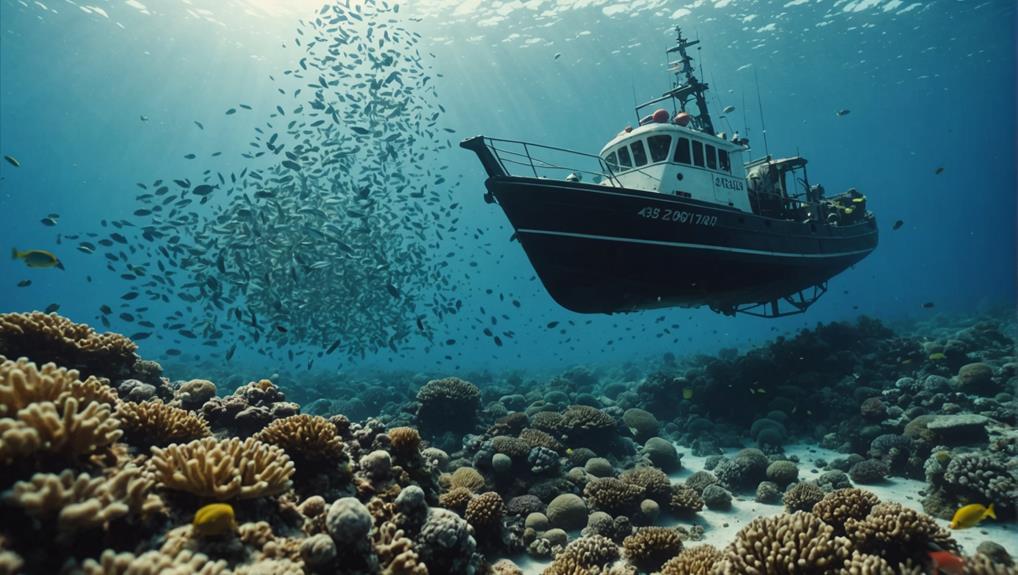
When considering chumming, you'll need to weigh its environmental impact carefully.
Ecosystem balance concerns arise from the introduction of excess nutrients and potential disruption of natural food chains.
Fish behavior changes and altered migration patterns can occur, while regulations and restrictions have been implemented in many areas to mitigate these effects.
Ecosystem Balance Concerns
Despite its effectiveness in attracting fish, chumming raises significant concerns about its impact on aquatic ecosystem balance. The practice can disrupt ecosystem balance by introducing excess nutrients into the water, potentially leading to unintended consequences. These nutrients may alter the natural food web and nutrient cycling processes, affecting various aquatic organisms beyond the target fish species.
Environmental concerns extend beyond nutrient imbalances. Chumming can result in:
- Increased aggression among fish competing for the introduced food
- Alteration of natural feeding patterns and behaviors
- Potential littering of non-biodegradable chumming materials
You should be aware that even biodegradable chumming materials, while preferable, can contribute to environmental issues if not properly managed.
As a responsible angler, consider alternative fish attraction methods that minimize ecological impact, such as stirring up silt or using large minnows.
Fish Behavior Changes
As a result of chumming practices, fish behavior can undergo significant alterations, leading to potential ecological consequences in the affected aquatic environments.
When you introduce chum into the water, you're likely to observe increased aggression among fish species as they compete for this easily accessible food source. This heightened competition can disrupt the natural balance of the ecosystem, as some fish may become more dominant while others struggle to access resources.
Excessive chumming can lead to disruptive feeding patterns, where fish begin to rely on the artificial food source rather than their natural foraging habits. This dependence can alter the fish's behavior in the long term, potentially impacting their ability to survive without human intervention.
As a responsible angler or marine enthusiast, it's crucial to understand that these altered foraging habits can have ripple effects throughout the food chain.
Regulations and Restrictions
Due to the potential environmental impacts of chumming, regulations and restrictions vary widely across different locations and jurisdictions. Understanding these rules is crucial for responsible fishing practices and maintaining the health of aquatic ecosystems. Environmental impact assessments often inform the development of chumming regulations, which aim to prevent contamination and control the introduction of bait fish species.
You'll need to be aware of specific restrictions in various areas:
- Public fishing bridges, piers, national parks, and preserves may ban chumming entirely.
- Beaches and many regions restrict shark chumming due to safety concerns.
- Some states, like Florida, allow chumming in areas with sandy bottom structures, while others, like Colorado, prohibit the practice.
The legality of chumming depends on your location, so it's essential to research local regulations before engaging in this practice. By adhering to these rules, you're not only complying with the law but also contributing to the preservation of marine ecosystems.
As a responsible angler, you're part of a community that values sustainable fishing practices and the protection of our shared aquatic resources. Always prioritize environmental stewardship when considering chumming as a fishing technique.
Legal Considerations
Chumming's legal status varies significantly across different jurisdictions, necessitating a thorough understanding of local regulations before engaging in this fishing practice. In Minnesota, for example, chumming is prohibited and can be considered littering if items are left in the water. This restriction extends to both live and dead bait chumming in certain areas, highlighting the importance of familiarizing yourself with specific regional rules.
To ensure you're complying with local laws, it's advisable to contact a Conservation Officer in your area. They can provide clarity on the nuances of chumming regulations, which may differ depending on the type of chum used. For instance, the legality of using rabbit pellets for chumming might differ from other methods.
As a responsible angler, it's crucial to prioritize environmental protection and avoid potential penalties. By staying informed about legal considerations surrounding chumming, you'll not only safeguard yourself from legal issues but also contribute to the preservation of aquatic ecosystems.
Species-Specific Chumming Strategies
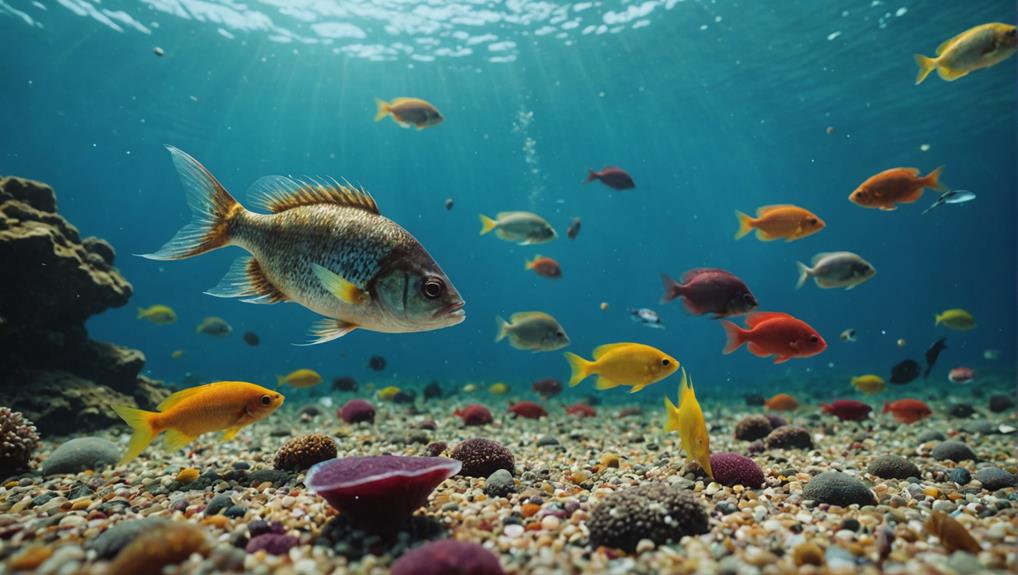
Effective chumming strategies vary significantly depending on the target species and local marine environment. When developing species-specific chumming strategies, it's crucial to consider the preferences and behaviors of your targeted species.
For example, in Australia, Southern Calamari Squid and mullet are effective for attracting squid near reefs and kelp beds. Similarly, bread and pillie chunks create an enticing chum slick for game fish along rocky shores.
To maximize your fishing success, consider these species-specific chumming strategies:
- Use live bait and chunk chumming techniques to attract larger fish species
- Create a burley trail with appropriate bait to lure certain species like mackerel, snapper, and grouper
- Implement chumming around structures such as reefs, towers, and humps to attract diverse fish species.
Chumming Equipment
You'll need specific equipment to effectively disperse chum in the water. Chum dispensers and buckets allow you to control the release of attractants, while nets and mesh bags offer versatile options for containing and distributing various chum types.
These tools enable you to precisely place chum at desired depths and locations, enhancing your ability to attract target fish species.
Chum Dispensers and Buckets
Chum dispensers and buckets serve as essential tools for anglers seeking to systematically release bait into the water, enhancing their ability to attract fish to a specific area. These devices come in various designs, each tailored to optimize the chumming process.
Net-style chum dispensers, for instance, are particularly effective for distributing frozen chum blocks efficiently. As the blocks thaw, the chum gradually disperses through the net's openings, creating a consistent trail of bait to attract fish.
Chum buckets with drilled holes offer a more controlled approach to chumming. By adjusting the size and number of holes, you can regulate the rate at which chum is released into the water. This method allows for a sustained attraction of fish over an extended period.
To maximize the effectiveness of your chumming techniques:
- Choose the appropriate dispenser or bucket based on your target species and fishing conditions
- Experiment with different chum mixtures to determine what works best in your area
- Monitor the chum release rate and adjust as necessary to maintain optimal attraction
Nets and Mesh Bags
Anglers' arsenal of chumming equipment often includes nets and mesh bags, which serve as versatile tools for the controlled release of attractants into the water. These devices offer you a precise method for dispersing chum, enabling a gradual and steady distribution that won't overwhelm your target fish. By using nets and mesh bags, you'll be able to create an effective chum slick or trail, enticing fish towards your fishing area.
The beauty of these tools lies in their ability to provide a controlled distribution of attractants. You can adjust the release rate by selecting different mesh sizes or manipulating the bag's openings. This level of control allows you to tailor your chumming strategy to specific fish species and varying water conditions. Whether you're fishing in freshwater lakes or saltwater environments, nets and mesh bags offer the flexibility to adapt your approach.
Historical Perspectives on Chumming
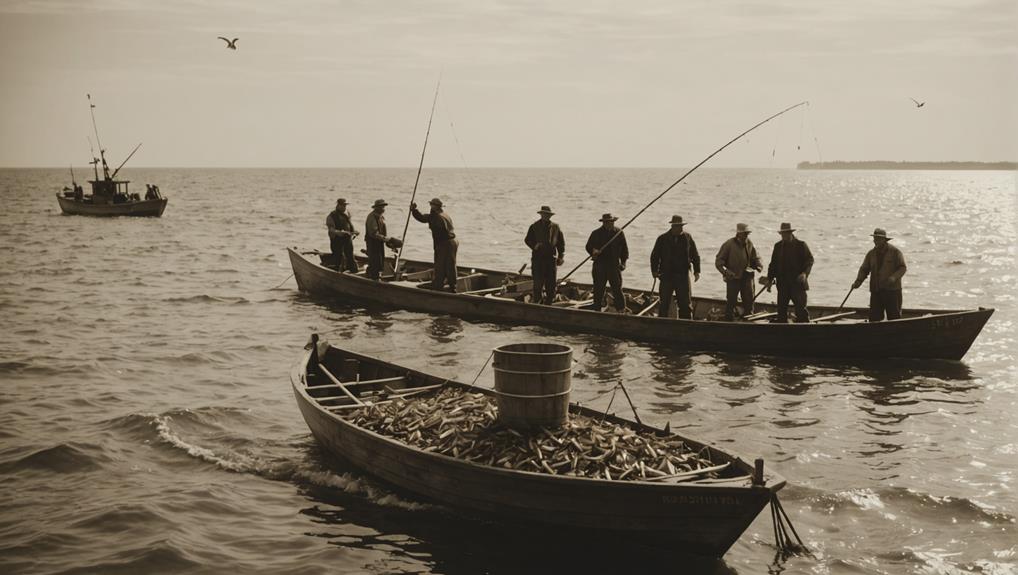
Dating back to ancient times, chumming has been employed by diverse cultures as a method to attract fish, enhancing the efficiency of their fishing endeavors. European anglers have utilized chumming techniques for over five centuries, refining their methods to increase their catch. North American Indians demonstrated innovative approaches, such as using grasshoppers to lure fish, showcasing the adaptability of chumming across different regions.
Victorian England introduced unique chumming practices, including 'gudgeon parties' where anglers used worms to catch fish in large quantities. This period marked a significant evolution in chumming techniques, reflecting the growing sophistication of fishing methods. In North America, Lobstermen in New England developed their own chumming approach, using oil-soaked bricks as bait, though this practice was eventually prohibited due to environmental concerns.
The historical development of chumming reveals:
- Adaptation to local ecosystems and available resources
- Continuous innovation in fishing techniques
- The eventual need for environmental regulations
As fellow anglers, we can appreciate how these historical perspectives have shaped our modern understanding and practice of chumming, connecting us to a rich tradition of fishing innovation spanning centuries and cultures.
Alternatives to Chumming
Recognizing the potential environmental impacts of traditional chumming, innovative alternatives have emerged to attract fish while minimizing ecological disturbances. As an angler, you can explore biodegradable alternatives that maintain the integrity of aquatic ecosystems.
Consider stirring up silt or weeds to create a natural attraction for fish without introducing foreign substances into the water. This method mimics natural disturbances and can be equally effective in luring your target species.
Another technique you can employ is using larger minnows under a tip-up. This approach serves as an excellent substitute for traditional chumming, providing a substantial and enticing bait for predatory fish.
By embracing creative thinking and exploring different fishing techniques, you'll discover numerous ways to attract fish without relying on conventional chumming methods.
As a responsible angler, it's crucial to consider the environmental impact of your practices. Experiment with unconventional attractants like glitter or other additives that don't harm the ecosystem.
Frequently Asked Questions
What Is Chumming for Fish?
You'll find chumming benefits anglers by attracting fish. Various techniques like groundbaiting exist, but consider safety and regulations. Alternatives are available if chumming's prohibited. Always research local laws and environmental impact before implementing this fishing method.
Why Is It Bad to Chum Water?
Imagine you're tossing breadcrumbs to ducks, but in excess. You're disrupting marine ecosystems, causing environmental impact and wildlife disturbance. Consider alternative methods and adhere to chumming regulations. We're responsible for preserving our shared aquatic habitats.
In What States Is Chumming Illegal?
You'll find chumming regulations vary by state due to environmental impact concerns. State restrictions differ, so check local laws. Conservation efforts promote alternative fishing methods. Some states ban chumming entirely, while others allow specific practices under certain conditions.
What Does Chumming the Waters Mean?
You're unleashing a feeding frenzy! Chumming the waters is a revolutionary fishing technique where you strategically scatter bait to attract marine wildlife. This baiting strategy can dramatically impact your catch, but beware—it might also lure curious sharks!
Conclusion
As you've explored the world of chumming, you've witnessed its power to attract fish through a calculated dispersion of bait. You've seen how this technique can transform a quiet sea into a frenzy of activity.
While chumming's effectiveness is undeniable, you must weigh its benefits against potential ecological impacts. As you cast your line, consider the broader implications of your fishing methods.
The future of our oceans may depend on the choices you make today.
